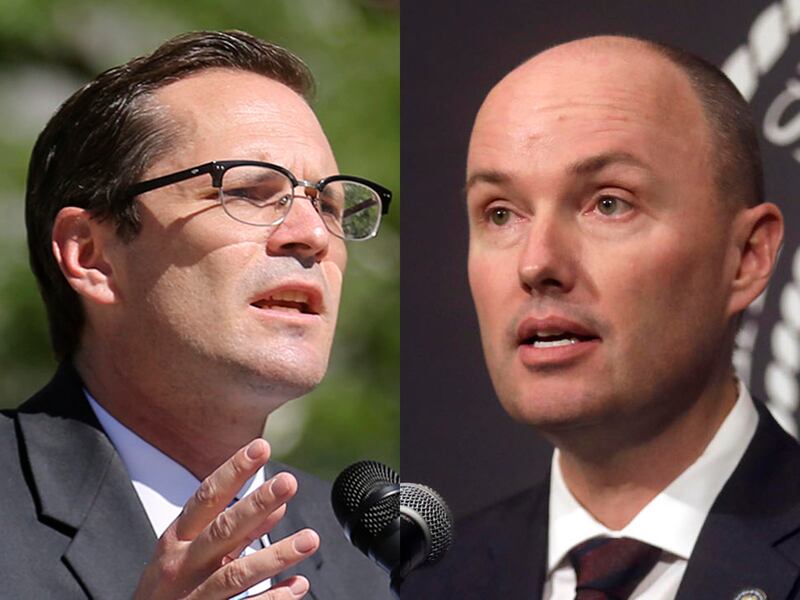In a relay race, though the speed and conditioning of the athletes are critical, often the defining moment of the race is the moment the baton changes hands. Done well, the new runner begins to run as the previous runner approaches, with the new runner reaching back and grabbing the baton while still moving forward. It is a period of risk; a dropped baton, an awkward step or a fall can change the outcome of the race.
Executive leadership in a democracy is also a relay, and the points of transition present risks whether a new president is elected or an incumbent retained. American democracy operates in four-year terms, and each election creates or renews a mandate from the people for a president or governor to lead. Though elections are often raucous and full of tension, power transitions peacefully. Poorly executed transitions, however, can result in squandering the momentum of a mandate, or even pose national security risks if enemies sense a vulnerability because of confusion or disfunction.
In order to help the transitions go smoothly, nominees create transition teams. Prior to 2010, when Congress passed the Presidential Transition Act, presidential candidates were reluctant to begin serious planning until after the November election because of the concern that it would appear presumptive. The Presidential Transition Act addressed the concern by creating a legal obligation for the nominees of each major political party to create a transition team. The act also provided access to government office space and government agencies to provide security clearances and other critical functions. Now, beginning in the late spring of each presidential election, every viable campaign begins the formidable task of preparing to assume leadership of our country.
Only one candidate will be successful in the election, therefore another concern of the nominees may be the work of the unsuccessful transition team not being utilized. Having chaired the transition committee of presidential candidate Mitt Romney in 2012, I understand the disappointment intimately. However, creating a transition team is an obligation of candidacy, and the ability of a transition team to maintain the orderly and efficient continuity of our republic makes it a necessity.
Here in Utah, we are approaching a moment of transition, a passing of the baton. Utah has an excellent governor in Gary Herbert. Widely respected and appreciated, he will continue to serve until just before noon on Jan. 4, 2021, when either Chris Peterson, the Democrat candidate, or Spencer Cox, the Republican candidate, will be sworn in as his replacement. No matter which of these two are selected, they will become governor at one of the most complicated moments in Utah history. A smooth transition is essential, and the 61 days between the election and inauguration will simply be inadequate to do it well. Both candidates need to begin now.
I have had the experience of becoming governor myself and have organized a presidential transition team (in addition to being an advisor on several others), so I want to offer advice to candidates Cox and Peterson on getting started.
A transition team should not be part of your campaign, though the chairman should be in close contact with the campaign so that the transition team is able to adjust as issues develop. It needs to be physically separate, in a quiet and secure place. The team should be focused on the details of governance, not the process of getting elected. Select a small group of experienced people to undertake this effort, people who share your values and ideology.
The chair should be a person whose judgment and motives you trust. Avoid people who represent specific interests. This group needs to remember that their job is not to generate ideas or develop an agenda, but rather to plan the implementation of the ideas and promises you make in the campaign. The first 200-day period will be vitally important to your success, so ask the transition team to lay the groundwork to assemble a team quickly to fulfill those commitments.
Please remember rule No. 1: a transition team has no voice. News media discussion about transition planning represents a failure. Announce that you have formed a transition team, name the chair, and let he or she go to work. Will people be curious? Of course — but speculation or leaks will distract your campaign.
Remember, as a candidate for governor, your first requirement is to get elected.
It is a popular parlor game around any election to guess who will do what in an administration. But it should be clear to the transition team that no discussions are to be held about any potential people serving in the administration until after the election. None. Those are decisions you will make once you have a mandate to lead. However, it will be helpful if the transition team assembles lists of multiple names to help jump-start your thinking after the election.
Remember, as a candidate for governor, your first requirement is to get elected. If you spend more than a modest amount of time with the transition planners, you are spending too much time. Your time should be spent thinking about what you want to accomplish, not the granular details of execution. This is good preparation for being governor, where your time will be spent making decisions and focusing on the big picture.
The two months between being elected governor and being sworn in as governor were among the most exhilarating periods of my life. It will be for you too, but Utah will be better governed if the baton is passed seamlessly, with no loss of momentum.
Mike Leavitt was elected governor of Utah in 1992, 1996 and 2000. He served in two separate roles on the cabinet of George W. Bush between 2003 and 2009. In 2012 he was chairman of the Romney for President Transition Committee


